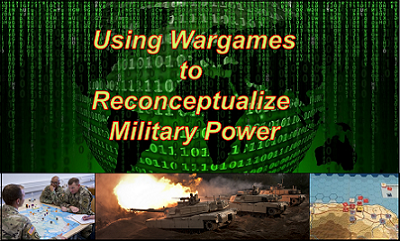[Editor’s Note: Army Mad Scientist welcomes back returning guest blogger and proclaimed Mad Scientist Caroline Duckworth with another insightful post, this time addressing the limitations of traditional net assessment in accurately predicting combat operations’ outcomes. Using the on-going conflict in Ukraine as a use case, Ms. Duckworth explores aspects of this conflict that have yielded today’s unanticipated David versus Goliath standoff. In identifying these “intangibles,” she then posits how the Army could leverage experts in qualitative strengths game design to allocate weighted measures and incorporate them into wargaming. These effects could then be re-evaluated after each round of gameplay, enabling fine tuning to better reflect real world realities — Read on!]
While challenging to capture, measuring a military’s power historically relies heavily on quantitative measurements. The number of weapons, troops, and transport vessels all indicate how capable an adversary might be in battle. However, as illustrated in the Ukrainian defense against the Russian invasion, materiel size only tells part of the story.
 Researchers have long called for a reinvention of the way we conceptualize military power. Several new indices have been developed that include modern metrics from equipment age to intelligence capabilities and recent combat experience. And yet, despite recognizing the importance of these qualitative metrics, the success of Ukrainian resistance still defied expectations. Such a failure of prediction is particularly surprising given efforts to adjust for recent gross miscalculation of Afghan military strength. In this case, too, the United States misjudged a foreign military because it failed to take into consideration important qualitative metrics. Senator Angus King said, “Within 12 months … we
Researchers have long called for a reinvention of the way we conceptualize military power. Several new indices have been developed that include modern metrics from equipment age to intelligence capabilities and recent combat experience. And yet, despite recognizing the importance of these qualitative metrics, the success of Ukrainian resistance still defied expectations. Such a failure of prediction is particularly surprising given efforts to adjust for recent gross miscalculation of Afghan military strength. In this case, too, the United States misjudged a foreign military because it failed to take into consideration important qualitative metrics. Senator Angus King said, “Within 12 months … we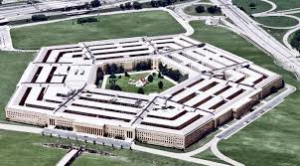 overestimated the Afghans’ will to fight, underestimated the Ukrainians’ will to fight.” As the United States monitors an increasingly assertive and advanced China, these miscalculations become particularly dangerous.
overestimated the Afghans’ will to fight, underestimated the Ukrainians’ will to fight.” As the United States monitors an increasingly assertive and advanced China, these miscalculations become particularly dangerous.
How can the Army, the Department of Defense (DoD), and the national security architecture as a whole better understand the power of foreign militaries? The answer lies in wargames.
A Case Study: Ukraine
Indices and assessments of military capability tend to capture numerical metrics—like spending, force size, and weapons counts—first. By these assessments, Ukraine should not have been able to withstand the Russian invasion. For instance, Global Fire Power estimates that Ukraine has only 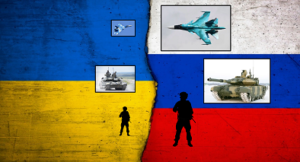 500,000 total military personnel compared to Russia’s 1,350,000. The Ukrainian military was also outmatched in numbers of armored fighting vehicles and combat aircraft, having just 20.9% and 9.5% of the Russian force’s assets, respectively. By these measures, the fall of Ukraine seemed inevitable; as U.S. Chairman of the Joint Chiefs of Staff General Mark A. Milley said, “The math problem is very difficult for the Ukrainians.”
500,000 total military personnel compared to Russia’s 1,350,000. The Ukrainian military was also outmatched in numbers of armored fighting vehicles and combat aircraft, having just 20.9% and 9.5% of the Russian force’s assets, respectively. By these measures, the fall of Ukraine seemed inevitable; as U.S. Chairman of the Joint Chiefs of Staff General Mark A. Milley said, “The math problem is very difficult for the Ukrainians.”
Despite this bleak outlook, the war in Ukraine is now in its fifth month. Ukraine has shown surprising strength, leveraging its home field advantage and technologically savvy leadership to boost its citizens’ morale and slow Russia’s advance into the country. While smaller in size, the Ukrainian military has been largely successful in targeting the Russian military’s logistics. It has taken aim at ammunition storage sites and destroyed key bridges, helping to offset Russia’s numerical advantage and complicating its ability to sustain continued offensive operations. Ukraine’s civilian population has mobilized, too, demonstrating a level of resilience, determination, and tenacity not seen in Russia’s military.
It’s unclear how this quantity versus quality disparity will play out as the war progresses. What is certain, however, is that we could have better understood both the strengths of the Ukrainian force and key weaknesses underlying Russia’s invasion. To avoid this mistake in the future, assessments of military capability should address both human elements, like troop morale, training, and experience, and the resilience of logistical support systems, in addition to traditional quantitative evaluations.
A new framework for military power
The U.S. military clearly recognizes the importance of qualitative factors when considering its own strength. Its leaders have long heralded the importance of personnel quality to achieving victory. The Army specifically highlighted this feature of success in its Army People Strategy, published in 2019. Training, healthcare, and support for civilian families are all frequently lauded to 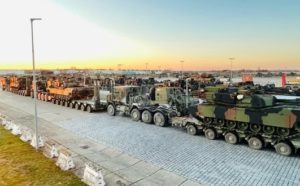 significantly contribute to U.S. mission success. Historically, too, the U.S. military has had the advantage in logistics, working to ensure that each branch has stable supply chains and ensuring interoperability between the forces. Thus, it is evident that the U.S. military values the qualitative elements of its own force strength. These measurements must now be applied to foreign forces as well.
significantly contribute to U.S. mission success. Historically, too, the U.S. military has had the advantage in logistics, working to ensure that each branch has stable supply chains and ensuring interoperability between the forces. Thus, it is evident that the U.S. military values the qualitative elements of its own force strength. These measurements must now be applied to foreign forces as well.
While a holistic measure of an adversary’s strength may be less concrete, it will also be more accurate. In addition to statistics on number, type, and age of weapons, assessments should include:
-
-
- Logistical Strength: Experts predicted Russia would be able to take over Ukraine in a matter of days. However, the Russians’ logistical support system to its troops has undermined its ability to operate effectively. Its trucks are “poorly maintained, poorly led, and too few in number,” preventing resupply at the frontlines. Thus, evaluations of military power should examine how logistical systems are designed and maintained — weapons mean little if they can’t be sustained, and manpower is undermined if soldiers lack essentials, like food and cold-weather gear. U.S. General of the Army Omar N. Bradley‘s often quoted adage holds true for today’s conflict in Ukraine — “Amateurs talk strategy. Professionals talk logistics.”
-
-
-
- The Human Element:
-
-
-
-
-
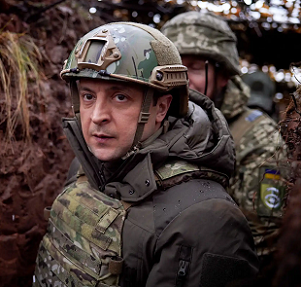
President Volodymyr Zelensky, Ukraine’s dynamic and peripatetic leader / Source: Ukrainian Presidential Press Office Leadership: On the civilian side, countless articles have described the outstanding leadership of Ukrainian President Volodymyr Zelensky. He has been described as “Churchillian,” displaying intense vulnerability and solidarity with the Ukrainian people by refusing to flee his country. Instead, he filmed videos of himself in Ukraine, reassuring people that he was standing up for them. His leadership mobilized Ukrainians and international support (thus increasing military assistance to Ukraine) — stiffening national resistance to Russian aggression. Such leadership from key civilian authorities cannot be taken for granted, and should be considered in calculations of military strength as it contributes to both troop morale and sustained societal support for conflict.
-
-
-

Ukrainian military leadership has been strong, as well. General Valeriy Zaluzhnyy, Ukraine’s Commander-In-Chief, has been described as a representation “of the new generation of Ukrainian military — senior, middle level and even low level officers.” While he has avoided public appearances and interviews since the beginning of the invasion, he has, according to General Milley, “[been] the man behind [the Ukrainian resistance], bearing the immense burden of leading in combat. His work will be remembered by history.” Thus, Zelensky’s civilian leadership is complemented by strong military leadership, creating a feature of the Ukrainian military that is not captured by today’s measurements of strength.
-
-
-
- Morale: As the war progresses, both Ukrainian and Russian soldiers are faltering. However, the situation seems more severe for the Russian army; entire units have disobeyed orders, resulting in armed standoffs between leaders and soldiers. Morale among the Russian forces has been low since early in the invasion, with some officers saying they felt “tricked” into the invasion. The U.S. Army already recognizes the importance of maintaining morale to secure mission success — this evaluation must now be implemented in efforts to evaluate the strength of potential adversaries. In the case of Russia’s war in Ukraine, such consideration does not bode well for the success of the invasion going forward.
-
-
-
-
-
-
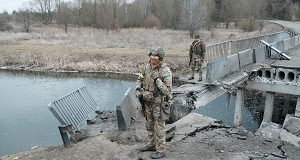
The battle for Kyiv demonstrated that, especially in an urban environment, terrain still matters. Ukrainians flooded rivers and destroyed bridges to canalize Russian invaders into chokepoints and kill zones, demonstrating an understanding of their environment unthinkable to non-natives. / Source: Modern War Institute Preparation: Both training and experience in an operational environment contributes to the strength of a military. While Ukraine employed its untrained civilians to resist the Russian invasion, they also had a far greater understanding of the vast urban terrain in Kyiv, using their knowledge of the city to their advantage. The Russian military was untested and poorly trained in this area, contributing to failure in its assault on the Ukrainian capital. Adversaries like Russia may also be deploying conscripts, who are generally less trained and unprepared for battle.
-
-
-
- Implementation: Wargames
- Evaluating the strength of foreign militaries holistically will require a more iterative process than simply counting main battle tanks and combat aircraft. To inspire this type of discussion and better understand the strength of potential adversaries, the U.S. military should host experts on the qualitative natures of foreign forces — professors, think-tank analysts, and military leaders who possess cultural expertise — in the development of future wargames. More specifically, these designers should consider translating qualitative metrics into quantitative weights that frame wargame operations.
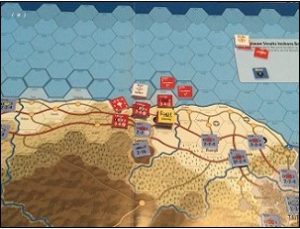 Wargames are designed to let players explore conflict scenarios and practice decision-making in a controlled environment. Yet, they are critiqued for simply reinforcing existing knowledge of their players. By seeking out experts of the qualitative strengths game design, U.S. military leaders can better understand the human and logistical factors underlying and complicating the battlefield.
Wargames are designed to let players explore conflict scenarios and practice decision-making in a controlled environment. Yet, they are critiqued for simply reinforcing existing knowledge of their players. By seeking out experts of the qualitative strengths game design, U.S. military leaders can better understand the human and logistical factors underlying and complicating the battlefield.
- Instead of allowing teams to make decisions based on what a leader might command, cultural experts could evaluate relevant qualitative measures and assign them numerical values on a predetermined scale. The measurements would then serve as “weights” that impact the success of team decisions during gameplay. Weights would be re-evaluated by the game designers after each round of gameplay, given that either team’s decision could impact these measures (for instance, a successful attack may boost measures of one team’s morale, while reducing the morale and logistical prowess of the other team).
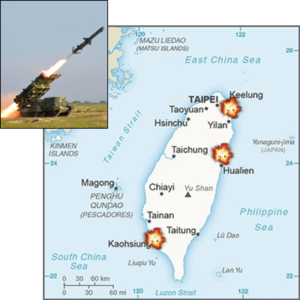 In a wargame simulating a Chinese invasion of Taiwan, for instance, the Chinese team may choose to attack a certain location. However, the number of personnel and materiel lost by each team during the move would be affected by weights previously determined by the cultural expert ‘team.’ At that point, morale might be weighted to a degree to cause more troop loss on one side than expected, or logistical support weights could decrease the
In a wargame simulating a Chinese invasion of Taiwan, for instance, the Chinese team may choose to attack a certain location. However, the number of personnel and materiel lost by each team during the move would be affected by weights previously determined by the cultural expert ‘team.’ At that point, morale might be weighted to a degree to cause more troop loss on one side than expected, or logistical support weights could decrease the 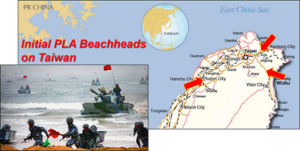
- number of functional units to carry out the mission. Relevant weights could even be severe enough to cause an operation to fail altogether.
- By translating qualitative measures into quantitative weights, wargames will be better equipped to incorporate the real impacts of less tangible measures of military strength.
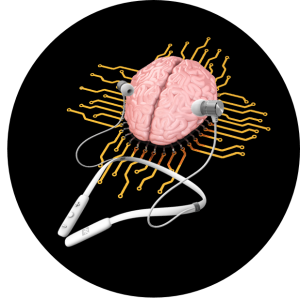
Stay tuned to the Mad Scientist Laboratory for our next episode of The Convergence — addressing how wargaming can broaden our understanding of future Operational Environment possibilities — to be published next week on 18 August 2022.
If you enjoyed this post, check out the following wargaming-related content:
Would You Like to Play a Game? Wargaming as a Learning Experience and Key Assumptions Check and “No Option is Excluded” — Using Wargaming to Envision a Chinese Assault on Taiwan, by Ian Sullivan
A New American Way of Training and associated podcast, with Jennifer McArdle
From Legos to Modular Simulation Architectures: Enabling the Power of Future (War) Play, by Jennifer McArdle and Caitlin Dohrman
The Storm After the Flood virtual wargame scenario, video, notes, and Lessons Learned presentation and video, presented by proclaimed Mad Scientists Dr. Gary Ackerman and Doug Clifford, The Center for Advanced Red Teaming, University at Albany, SUNY
The Metaverse: Blurring Reality and Digital Lives with Cathy Hackl and associated podcast
Gamers Building the Future Force and associated podcast
Fight Club Prepares Lt Col Maddie Novák for Cross-Dimension Manoeuvre, by LTC(P) Arnel David, U.S. Army, and Major Aaron Moore, British Army, along with their interview in The Convergence: UK Fight Club – Gaming the Future Army and associated podcast
About the Author: Caroline Duckworth is a proclaimed Mad Scientist, former Army Mad Scientist Consultant, and former Gaither Junior Fellow at the Carnegie Endowment for International Peace. She graduated summa cum laude from The College of William and Mary in Virginia in 2021, with a BA in International Relations and Data Science. Ms. Duckworth previously interned with the Mad Scientist Initiative through the Army Futures and Concepts Center, and is a frequent contributor to the Mad Scientist Laboratory.
- The author would like to thank Matthew Santaspirt for his significant assistance in completing this post, as well as Kate Kilgore, Raechel Melling, Charles Raymond, and Ian Sullivan for their insightful feedback.
- Disclaimer: The views expressed in this blog post do not necessarily reflect those of the U.S. Department of Defense, Department of the Army, Army Futures Command (AFC), or Training and Doctrine Command (TRADOC).

